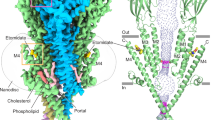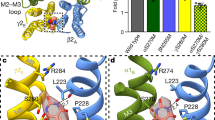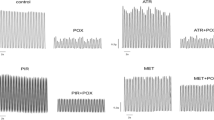Abstract
ATHOUGH volatile general anaesthetics, of the so called structurally non-specific type, have been shown to affect synaptic transmission1,2, the underlying mechanisms are unknown. In view of their oil solubility, it has been suggested that these anaesthetics owe their depressant effect to the ability to induce non-specific disordering of membrane lipids3,4. But some equally oil-soluble and structurally non-specific ethers are potent convulsants rather than anaesthetics5 and theoretical considerations suggest6 that the two groups act at different sites in the nervous system and therefore are more specific in action than assumed so far. In support of this, we now report that each of a pair of representative agents, methoxyflurane, an anaesthetic and hexafluorodiethylether (HFE, Indoklon, Ohio Medical and Surgical Suppliers), a convulsant, have different effects on excitatory or inhibitory transmission at the crab neuromuscular junction. We have found that in the adductor muscle of the crab, Ocypoda cursor, which contains both glutamate and γ–amino-butyrate (GABA) receptors, methoxyflurane blocks the action of glutamate but not of GABA, while HFE blocks the effect of GABA but not of glutamate.
This is a preview of subscription content, access via your institution
Access options
Subscribe to this journal
Receive 51 print issues and online access
$199.00 per year
only $3.90 per issue
Buy this article
- Purchase on Springer Link
- Instant access to full article PDF
Prices may be subject to local taxes which are calculated during checkout
Similar content being viewed by others
References
Larrabee, M. G. & Holadoy, D. A. J. Pharmac. exp. Ther. 105, 400–408 (1952).
Richards, C. D., Russell, W.-J. & Smaje, J. C. J. Physiol., Lond. 248, 121–142 (1975).
Trudell, J. R., Hubbell, W. L. & Cohen, E.-N. Biochim. biophys. Acta 291, 321–327 (1973).
Seeman, P. Pharmac. Rev. 24, 583–655 (1972).
Krantz, J.-C., Rudo, F. G. & Loecher, C. K. Proc. Soc. exp. Ther. 105, 400–408 (1967).
Cohen, S., Goldschmid, A., Shtacher, G., Srebrenik, S. & Gitter, S. Molec. Pharmac. 11, 379–385 (1975).
Atwood, H. L. Am. Zool. 7, 527–551 (1967).
Curtis, D. R. & Watkins, J. C. J. Physiol., Lond. 166, 1–14 (1963).
Krnjevic, K. in GABA in Nervous System Function (Raven, New York, 1976).
Barker, J. L. Brain Res. 93, 77–90 (1975).
Secher, O., Acta Anaesth. Scand. suppl. 42, 1–95 (1971).
Karliner, W. & Padula, L. J. J. Neuropsychiat. 3, 159–162 (1962).
Parnas, I., Rahamimoff, R. & Sarne, Y. J. Physiol., Lond 250 275–286 (1975).
Author information
Authors and Affiliations
Rights and permissions
About this article
Cite this article
RICHTER, J., LANDAU, E. & COHEN, S. Anaesthetic and convulsant ethers act on different sites at the crab neuromuscular junction in vitro. Nature 266, 70–71 (1977). https://doi.org/10.1038/266070a0
Received:
Accepted:
Published:
Issue Date:
DOI: https://doi.org/10.1038/266070a0
This article is cited by
-
Mechanisms of anaesthesia: A review
Canadian Anaesthetists’ Society Journal (1980)
Comments
By submitting a comment you agree to abide by our Terms and Community Guidelines. If you find something abusive or that does not comply with our terms or guidelines please flag it as inappropriate.



